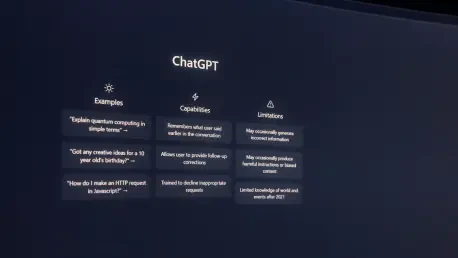As technological advances continue to reshape the landscape of mental health assessment, AI models are increasingly being deployed to detect signs of depression through data gleaned from social media platforms. This progression presents a promising approach to the timely identification of mental health issues. However, a study conducted by Northeastern University graduates has highlighted significant biases and technical flaws within these emerging tools. Analyzing 47 academic papers published since 2010, the research underscores the challenges inherent in tuning AI models and the lack of methodological rigor that often characterizes their development. Concerns are further exacerbated by the fact that researchers, primarily from the fields of medicine or psychology, may not possess the substantial technical know-how required to appropriately wield AI and machine learning tools. These limitations are especially critical as traditional models like Support Vector Machines and Decision Trees, as well as advanced systems like Convolutional Neural Networks and BERT, gain popularity in this context.
Methodological Concerns and Technical Limitations
A primary theme emerging from the study is the inadequate tuning of AI models, which serve as crucial tools in navigating the complex terrain of depression detection via social media data. Astonishingly, only 28% of the studies examined demonstrated sufficient customization of hyperparameters, pivotal in directing the learning journey of these models. This issue is particularly troubling, as it directly impacts the efficacy and reliability of AI-powered mental health applications. Furthermore, around 17% of the studies did not correctly partition data into training, validation, and test sets—an essential process to ensure models do not overfit and maintain real-world applicability. Such oversight potentially skews results, misleadingly elevating the perceived capability of these models to detect nuanced symptoms across a broad user base.
Moreover, over-reliance on accuracy as the sole metric for performance evaluation emerges as a substantial pitfall, particularly when confronting imbalanced datasets. Such datasets could inadvertently neglect users with subtle symptoms of depression, leading to over-generalized and simplistic models. The pursuit of balance and accuracy requires comprehensive performance metrics that account for various nuances within social media interactions. Without these nuanced evaluations, the efforts to employ AI in mental health diagnostics may fall short of their transformative potential. Consequently, bias and inadequacies in data selection underscore a pressing need for standardization, magnified by the challenge of applying these models credibly across diverse, global demographics.
Addressing Linguistic Nuances and Model Transparency
The subtle art of interpreting linguistic nuances like sarcasm and negation poses another critical challenge for AI models aimed at sentiment analysis—a field intricately tied to depression detection. Just 23% of the studies examined acknowledged this element, raising concerns about whether AI can truly grasp the complexities inherent in human communication. Sentiment analysis, while powerful, must incorporate these intricacies to avoid oversights that could misinterpret users’ true emotional states, leading to misguided assessments. Efficiently tackling such linguistic challenges requires more advanced models and approaches, capable not only of understanding but also contextualizing the intricate shades of human expression found in various social media platforms.
Additionally, transparency in reporting dataset divisions and hyperparameter settings is another area requiring attention. The study utilized the PROBAST tool to assess predictive models, unveiling significant omissions in methodological clarity. Lack of transparency hampers reproducibility, making it difficult to validate findings across different studies or settings. Such inconsistencies prevent the AI community from building on existing knowledge, stifling innovation and the development of robust, reliable tools. The intricate balance of maintaining transparency and consistency directly correlates with the trust users place in these AI systems, influencing how readily practitioners might integrate these models into broader mental health strategies.
Pathways to Improvement and Future Considerations
As technology continues to evolve, AI models are increasingly used in mental health assessment by analyzing social media data for signs of depression. This innovative approach offers potential for early detection of mental health problems. However, research by Northeastern University graduates has exposed significant biases and technical shortcomings in these developing tools. Examining 47 academic papers published since 2010, the study emphasizes the difficulties in fine-tuning AI models and the frequent absence of methodological rigor in their development process. These concerns are deepened by the fact that many researchers come from medical or psychological backgrounds and may lack the necessary technical expertise to effectively handle AI and machine learning technologies. This issue is especially pressing as both traditional AI tools, such as Support Vector Machines and Decision Trees, and more advanced systems like Convolutional Neural Networks and BERT are increasingly adopted for these purposes in mental health fields.









